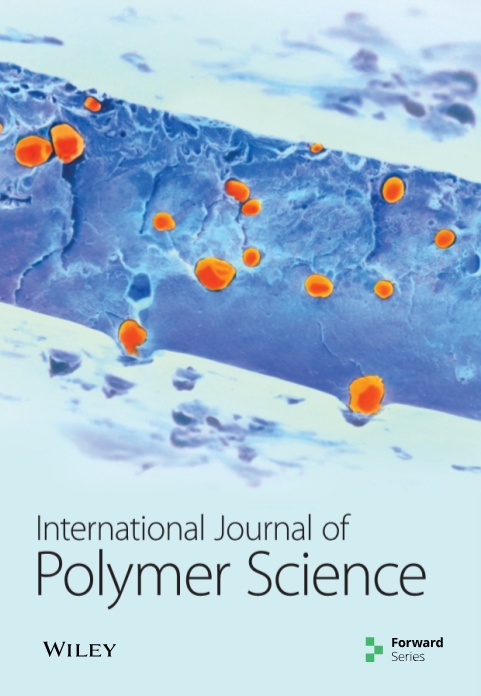Design of Novel Poly(Propranolol) Acrylate and Methacrylate Polymers through Radical Polymerization for Antibacterial Activity and Metal Ion Absorption
IF 4.4
4区 化学
Q2 POLYMER SCIENCE
引用次数: 0
Abstract
The monomer 1-(isopropylamino)-3-(1-naphthyloxy)-2-propanoacrylate (IANOPA) and monomer 1-(isopropylamino)-3-(1-naphthyloxy)-2-propanomethacrylate (IANOPMA) were synthesized by treating 1-(isopropylamino)-3-(1-naphthyloxy)-2-propanol with acryloylchloride/methacryloyl chloride. The above esterification reactions were carried out in the presence of triethylamine. By employing the free radical polymerization method, the synthesized monomers were converted into polymers by using an initiator 2, 2-azobisisobutyronitrile in the presence of nitrogen environment at °C. The monomers and polymers were characterized by various techniques such as FT-IR, UV, 1H NMR, and 13C NMR spectroscopic analyses. Further, differential scanning calorimetry (DSC) was used to estimate the glass transition temperature (). Gel permeation chromatography (GPC) was used to estimate the molecular weight of the polymers. In addition, monomer and polymer surfaces’ morphology was analyzed using SEM analysis. As a primary application, the effectiveness of synthesized monomers and polymers was explored as antibacterial agents against gram-positive bacteria (Staphylococcus aureus) and gram-negative bacteria (Pseudomonas aeruginosa) which were measured from their inhibitory zone diameters. Further, the synthesized polymers, poly-IANOPA and poly-IANOPMA, were utilized for the uptake ability study of heavy metal ions such as Zn2+, Cu2+, Ni2+, and Pb2+ present in water sources by equilibrium method.通过自由基聚合设计新型聚(普萘洛尔)丙烯酸酯和甲基丙烯酸酯聚合物以提高抗菌活性和金属离子吸收能力
单体 1-(异丙基氨基)-3-(1-萘氧基)-2-丙丙烯酸酯 (IANOPA) 和单体 1-(异丙基氨基)-3-(1-萘氧基)-2-丙甲基丙烯酸酯 (IANOPMA) 是用丙烯酰氯/甲基丙烯酰氯处理 1-(异丙基氨基)-3-(1-萘氧基)-2-丙醇合成的。上述酯化反应在三乙胺存在下进行。采用自由基聚合法,在 ℃ 的氮环境下,使用引发剂 2,2-偶氮二异丁腈将合成的单体转化为聚合物。通过傅立叶变换红外光谱、紫外光谱、1H NMR 和 13C NMR 光谱分析等多种技术对单体和聚合物进行了表征。此外,还使用差示扫描量热法(DSC)来估算玻璃化转变温度()。凝胶渗透色谱法(GPC)用于估算聚合物的分子量。此外,还使用 SEM 分析法对单体和聚合物表面的形态进行了分析。作为主要应用,探讨了合成单体和聚合物作为抗菌剂对革兰氏阳性菌(金黄色葡萄球菌)和革兰氏阴性菌(铜绿假单胞菌)的有效性。此外,还利用合成的聚合物聚 IANOPA 和聚 IANOPMA,通过平衡法研究了它们对水源中重金属离子(如 Zn2+、Cu2+、Ni2+ 和 Pb2+)的吸收能力。
本文章由计算机程序翻译,如有差异,请以英文原文为准。
求助全文
约1分钟内获得全文
求助全文
来源期刊

International Journal of Polymer Science
POLYMER SCIENCE-
CiteScore
6.10
自引率
0.00%
发文量
55
审稿时长
>12 weeks
期刊介绍:
The International Journal of Polymer Science is a peer-reviewed, Open Access journal that publishes original research articles as well as review articles on the chemistry and physics of macromolecules.
 求助内容:
求助内容: 应助结果提醒方式:
应助结果提醒方式:


